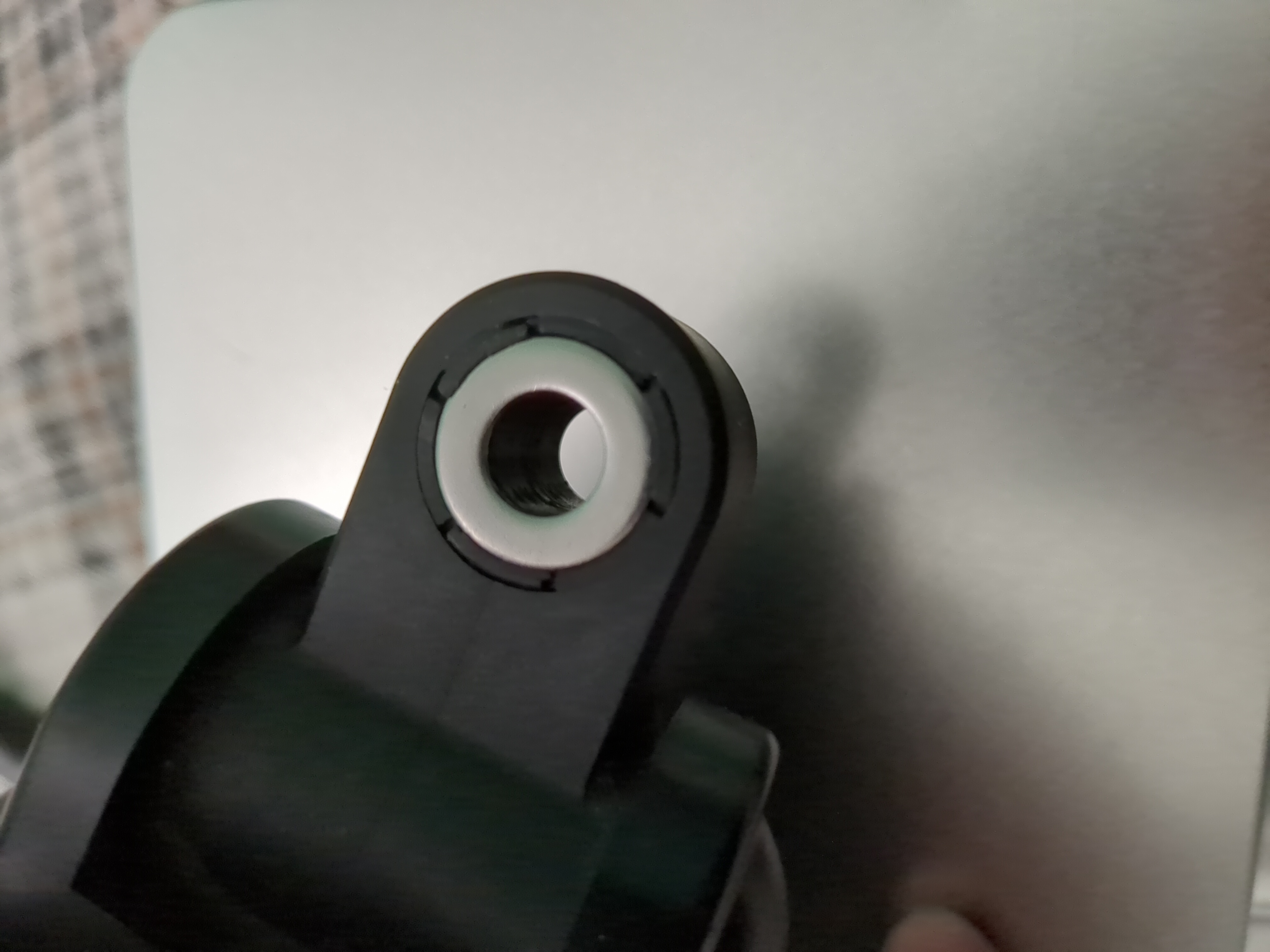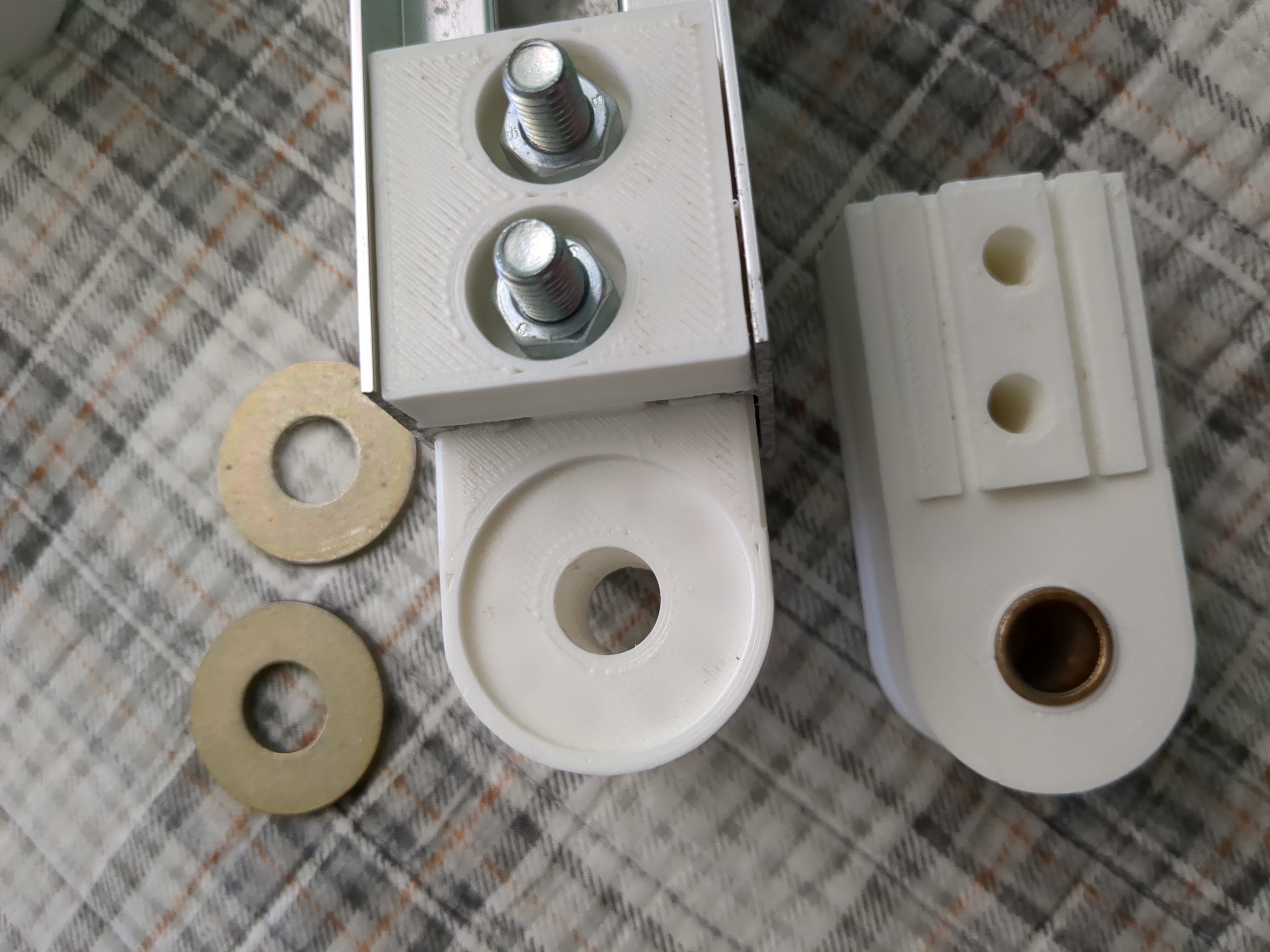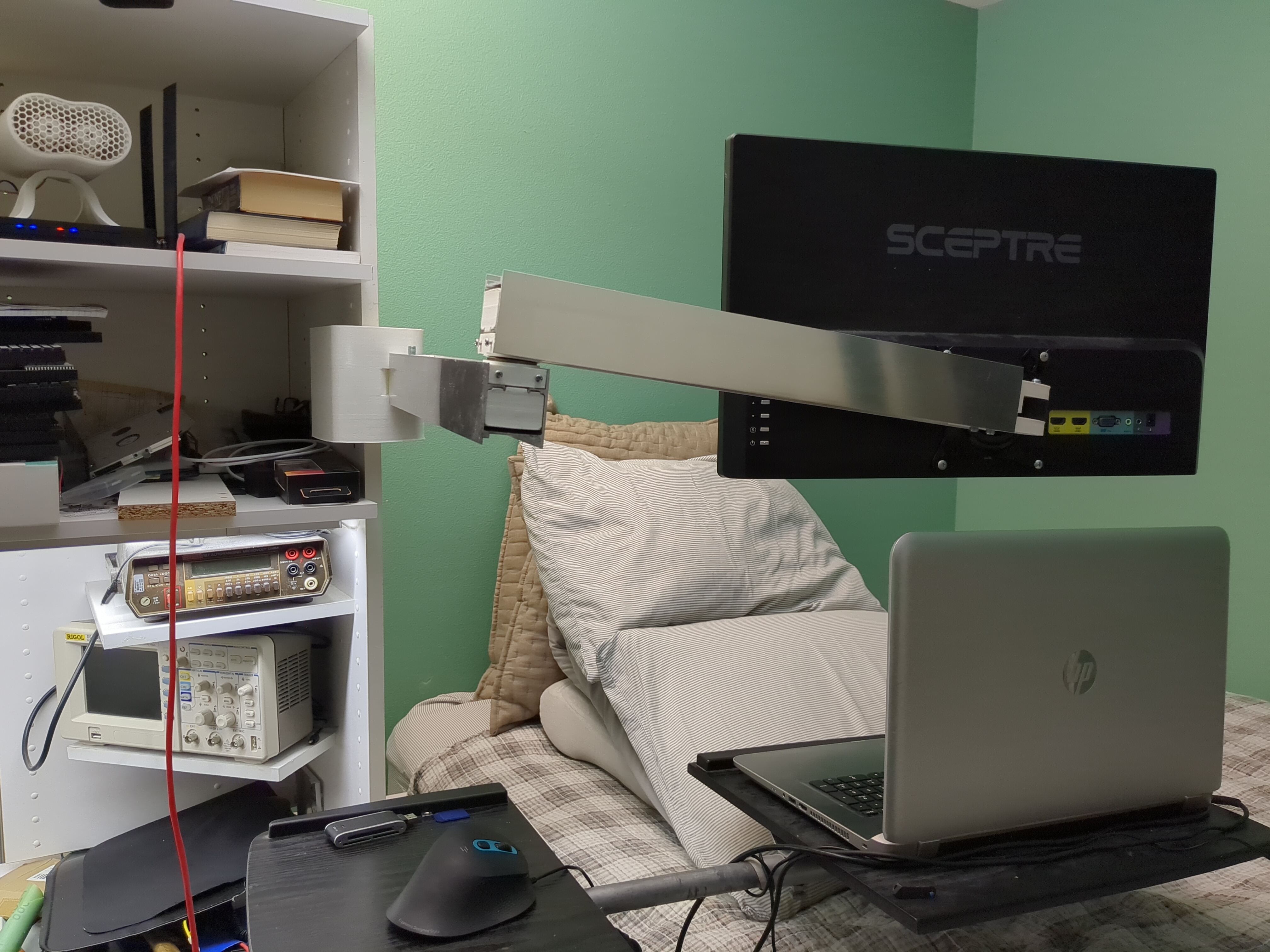It is tough building stuff like mounting arms to hold weight without deforming. Most of the time it is best to make joints that only need 1 dof each. Like this is why you see the parallel mechanisms used for articulated desk lamps; each joint only has 1 dof but a bunch are combined. You'll see something similar with computer monitor arms.


Like this joint has a recess in the top and bottom for washers with a bolt passing through the middle. It may seem like the bolt through the middle would be what holds the load and any slop in the joint, but this is not the case. The bolt is only holding the compression of the assembly and it is the gap between the washers that controls the slop and weight. It took me a few iterations to imitate this type of joint with a print.



Ultimately, that arm needs another iteration to make it even more rigid, but it is usable like this. That arm is almost 5ft long with a 24in monitor on it.